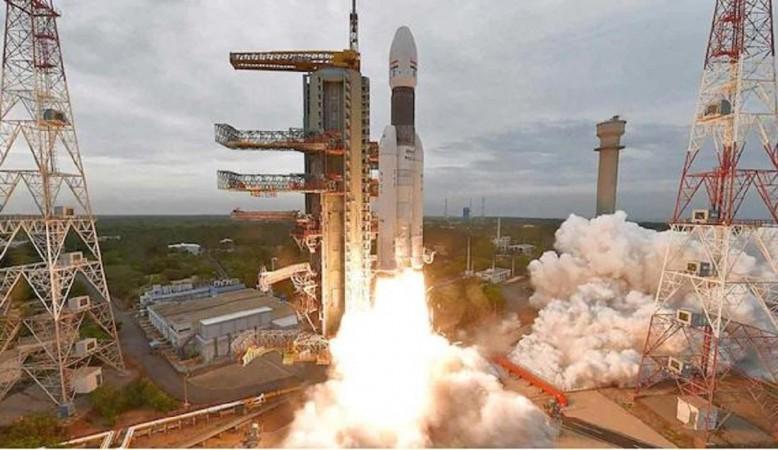Three days before the Indian tricolour is hoisted atop the Red Fort on August 15, India's space agency ISRO will send its earth observation satellite EOS-03 earlier named or the Geo Imaging Satellite-1 (GISAT-1).
ISRO said the GISAT-1 will be the country's first sky eye or earth observation satellite to be placed in geostationary orbit. To be launched by the rocket Geosynchronous Satellite Launch Vehicle-F10 (GSLV-F10) on Aug 12.
The rocket is expected to blast off at 5.43 a.m. from the second launch pad at Sriharikota in Andhra Pradesh, said Indian Space Research Organisation (ISRO).

The GSLV-F10 rocket will leave the GISAT-1 at the geosynchronous transfer orbit from where the satellite will be taken up to its final position firing its onboard motors.
Once placed in geostationary orbit, the satellite will have a steady eye on the areas of interest as it moves in sync with the rotation of the earth (geosynchronous).
Originally the GISAT-1 was scheduled to be launched on March 5, 2020, but postponed hours before the launch due to some technical glitch.
Delay due to Covid
Soon after the Covid-19 pandemic or Covid first wave hit the country and the lockdown delayed the mission. Meanwhile, the rocket had to be dismantled and cleaned up. Later, it was slated for March 2021 launch but battery problems delayed the launch.
With the replacement of the battery, the satellite and the rocket were readied for their flight at Sriharikota as the country undergoing the second wave of Covid-19 that affected many engineers at the rocket launch centre in Sriharikota.
Technical Details
ISRO had earlier said the 2,268 kg GISAT-1 would provide a real-time image of a large area of the region of interest at frequent intervals and also enable quick monitoring of natural disasters, episodic events and any short-term events.

The satellite will have payload imaging sensors of six band multi-spectral visible and near infra-red with 42 metres resolution; 158 bands hyper-spectral visible and near infra-red with 318 metres resolution and 256 bands hyper-spectral short wave infra-red with 191 metres resolution.
A four-metre diameter Ogive shaped payload fairing (heat shield) has been used in the rocket for the first time, ISRO had said.
After the GISAT-1 launch, the other satellite to go up will be EOS-4 or Risat-1A is a radar imaging satellite with Synthetic Aperture Radar (SAR) that can take pictures during day and night looking through the clouds. The satellite weighing over 1,800 kg will be carried by the Polar Satellite Launch Vehicle (PSLV) this September, said ISRO.
An ISRO official had earlier said an earth observation satellite will send pictures that will be used by different agencies as per their needs.

















